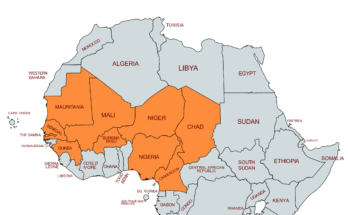by Dan Darling, International Military Markets Analyst, Forecast International.
The government of the Philippines aims to bolster the country’s defense budget by 14 percent under its fiscal year 2017 proposal. The latest assumptions put forth by the government cover a PHP3.35 trillion ($71.9 billion) national budget for FY17 that includes a PHP130.6 billion ($2.8 billion) earmark for the Department of National Defense (DND). If approved by the country’s bicameral Congress, the nominal top-up to the current 2016 defense allocation of PHP111.5 billion ($2.52 billion) would amount to 14 percent year-on-year.
In previous years, the DND has put forth large budgetary requests only to see them pruned sharply during the budget ratification process. A glaring example came in 2016. The DND requested a budget allocation as high as PHP202 billion, which was then trimmed to PHP172 billion by the former Aquino administration before plummeting to PHP111.5 billion after being capped by the Department of Budget and Management through the budget approval process.
The Philippines Armed Forces (AFP) is in the midst of a modernization effort that has gathered momentum over the course of the decade. Though a previous such effort outlined by former President Fidel Ramos was signed into law in February 1995 as the Republic Act No. 7898 (AFP Modernization Act), this 15-year, PHP331 billion plan was largely abandoned barely two years into the process when the Philippine economy fell victim to the 1997-98 Asian financial crisis. Subsequent governments largely pushed the AFP Modernization Act to the side as they instead fixed their focus on economic and social welfare policy.
All the while, the AFP’s capabilities – already outdated and under strain due to counterinsurgency operations – continued to erode, rendering the AFP one of the weakest militaries in the region. Furthermore, China’s maritime assertiveness and efforts to assert de facto control over disputed points in the South China Sea had increasingly raised concerns in Manila that it had zero hard power with which to gird its foreign policy.
By the time Benigno Aquino took over as president in June 2010, the lack of air- and sea-based platforms that would provide the Philippines with the pretense to defend its disputed claims in the South China Sea had reached a critical point.
Buttressed by an expanding economy, the Aquino administration set about attempting to mitigate the damage to the AFP brought on by years of neglect. On December 11, 2012, President Aquino signed into law the New AFP Modernization Act (Republic Act 10349), which extended the modernization process of the military out another 15 years and allocated PHP75-PHP83 billion in capitalization funding across the first five-year phase (2013‑2017).
Under this revised AFP Modernization Act, the armed forces were allocated PHP25 billion in modernization funding in 2016, a figure that is mirrored in the FY17 budget proposal. Some of this funding will be used to cover fresh contracts for the two-ship Frigate Acquisition Program (reportedly awarded to Hyundai Heavy Industries of South Korea last week) and three radar systems for the Philippine Air Force (PAF). Additional funding will be used to make installment payments on the acquisition of 12 FA-50PH (for Philippines) Lead-in Fighter Trainer (LIFT) aircraft from Korea Aerospace Industries.
These and other planned procurements are deemed essential elements of outfitting the AFP with an air-sea ensemble that enables it to “show the flag,” in diplomatic-military parlance. Though the idea of building quantitative or qualitative military peer competitiveness with China is a non-starter proposition, a minimal deterrent-response element is nonetheless a necessity in order for the Philippines to protect its exclusive economic zone (EEZ) and sovereign territory.
Though the new presidential administration of Rodrigo Duterte appears to be continuing the plans of its predecessor, it should be noted that under its defense budgetary allocation, the largest service earmark is for the Philippine Army and not the Navy or Air Force (whose combined allocations are less than that of the Army).
During his campaign leading up to the May election, Duterte made clear that he viewed China as less of a national security threat than internal concerns such as crime, terrorism and insurgency. Thus a 24.6 percent year-on-year budgetary increase for the Philippine National Police (PNP) under the proposed FY17 budget is almost as noteworthy as the modernization earmark provided to the AFP and overall 14 percent defense budget increase.
Please feel free to use this content with Forecast International and analyst attributions, along with a link to the article. Contact Ray Peterson at +1 (203) 426-0800 or via email at ray.peterson@forecast1.com for additional analysis.
The Forecast International International Military Markets series examines the military capabilities, equipment requirements, and force structures inventories of 140 countries, with corresponding coverage of the political and economic trends shaping the defense market outlook for individual countries and regions.
For 50 years, Forecast International intelligence reports have been the aerospace and defense industry standard for accurate research, analysis, and projections. Our experienced analysts compile, evaluate, and present accurate data for decision makers. FI's market research reports offer concise analysis of individual programs and identify market opportunities. Each report includes a program overview, detailed statistics, recent developments and a competitive analysis, culminating in production forecasts spanning 10 or 15 years. Let our market intelligence reports be a key part of reducing uncertainties and mastering your specific market and its growth potential. Find out more at www.forecastinternational.com



